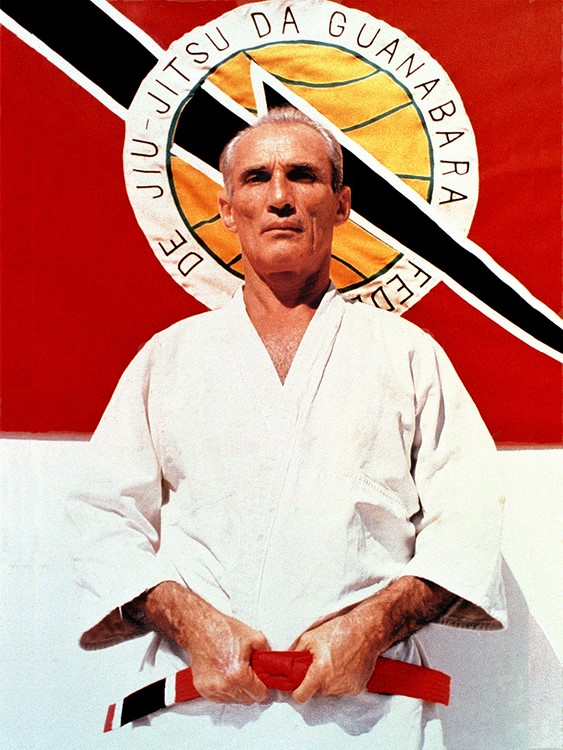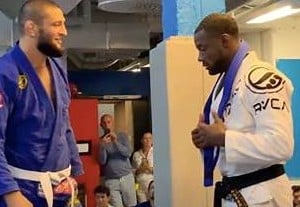Helio Gracie: The Grandmaster of Brazilian Jiu-Jitsu

Early Life and Family Background
Hélio Gracie was born on October 1, 1913, in Belém do Pará, Brazil, into a family synonymous with the history of Brazilian Jiu-Jitsu (BJJ). He was the youngest of eight children in the Gracie family, which was known for its physical stature and athleticism. However, Helio himself was frail and often ill, which limited his ability to participate in physical activities during his early years.
The Gracie family’s move to Rio de Janeiro marked a turning point in Helio’s life. His older brother, Carlos Gracie, had been introduced to Japanese Jiu-Jitsu by Mitsuyo Maeda, a Japanese judoka and martial artist who had immigrated to Brazil. Carlos learned the techniques and began teaching them to his brothers, including Helio.
Introduction to Jiu-Jitsu
Helio’s introduction to Jiu-Jitsu was somewhat unconventional. Due to his delicate health, he was not initially allowed to train formally with his brothers. Instead, he observed Carlos’s classes and absorbed the techniques mentally. At 16, when Carlos was late for a class, Helio seized the opportunity to teach the lesson himself. Despite his lack of physical strength, Helio demonstrated the techniques effectively, leading Carlos to allow him to teach regularly.
Helio realized that his physical limitations required modifications to the traditional Jiu-Jitsu techniques. He began adapting the moves to rely more on leverage and technique rather than brute strength, which was the genesis of Brazilian Jiu-Jitsu (BJJ). These adaptations allowed smaller, weaker individuals to defend themselves effectively against larger opponents.
Helio Gracie vs. Masahiko Kimura
One of Helio Gracie’s most famous and defining moments came in 1951 when he faced Masahiko Kimura, a legendary judoka from Japan. Kimura, considered one of the greatest judokas of all time, was invited to Brazil for a challenge match. The fight occurred at Maracanã Stadium in Rio de Janeiro in front of about 20,000 spectators.
Despite being significantly smaller and less experienced in competitive judo, Helio bravely accepted the challenge. The fight was intense and showcased Helio’s resilience and technical prowess. However, Kimura’s skill and physical superiority eventually led him to win the match, famously applying the “Kimura” (a double wristlock) to submit Helio. In a display of toughness and determination, Helio refused to tap out, leading to his arm being broken before his corner threw in the towel.
This match, although a loss for Helio, significantly raised the profile of Brazilian Jiu-Jitsu and cemented Helio’s status as a formidable martial artist who could stand toe-to-toe with the best in the world. The “Kimura” submission technique is now a well-known and widely used move in both Judo and BJJ, named in honor of Kimura but forever linked to this historic match.
Development and Growth of Brazilian Jiu-Jitsu
As Helio refined his techniques, he challenged and defeated much larger opponents in martial arts competitions and no-holds-barred matches. His victories over numerous challengers, including experienced fighters from various disciplines, helped solidify the Gracie family’s reputation and their new style of Jiu-Jitsu.
In the 1930s, Helio and his brothers established the Gracie Academy in Rio de Janeiro, where they began teaching BJJ to a wider audience. Helio’s teaching methods emphasized self-defense, practical applications, and martial arts philosophy, which he believed was a way of life.
The Gracie family further popularized BJJ through the “Gracie Challenge,” an open invitation to martial artists of any style to fight against a member of the Gracie family. These challenges, often fought with minimal rules, proved BJJ’s effectiveness in real combat situations.
Expansion to the United States
Brazilian Jiu-Jitsu began to spread internationally in the latter half of the 20th century, largely due to the efforts of Helio’s sons, particularly Rorion Gracie. In the 1980s, Rorion moved to California and began teaching BJJ, which led to the founding of the Gracie Jiu-Jitsu Academy in Torrance, California.
Rorion’s vision for promoting BJJ in the United States culminated in creating the Ultimate Fighting Championship (UFC) in 1993. The inaugural UFC event was designed to pit fighters from different martial arts disciplines against each other to determine the most effective fighting style. Helio’s son, Royce Gracie, represented BJJ and won three of the first four UFC tournaments, bringing unprecedented attention to the art.
Royce Gracie’s success in the UFC was crucial in popularizing Brazilian Jiu-Jitsu in the United States and worldwide. It demonstrated that BJJ’s emphasis on technique, leverage, and ground fighting was effective against other martial arts.
Helio Gracie’s Legacy and Most Successful Students
Helio Gracie’s legacy is monumental in the world of martial arts. He not only developed a martial art that has become one of the most popular in the world, but he also instilled in his students a philosophy of humility, perseverance, and respect.
Some of his most successful students include:
- Rickson Gracie: Widely regarded as one of the greatest practitioners of BJJ, Rickson was undefeated in MMA and became a legendary figure in the sport.
- Royce Gracie: His victories in the early UFC events played a key role in the global recognition of Brazilian Jiu-Jitsu.
- Royler Gracie: A multiple-time world champion in BJJ and ADCC champion, Royler continued to elevate the art through his competitive success and teaching.
- Rorion Gracie: Founder of the UFC and one of the main figures responsible for bringing BJJ to the United States.
- Carlos Gracie Jr.: Founder of the International Brazilian Jiu-Jitsu Federation (IBJJF), which organizes many of the sport’s most prestigious competitions.
Helio Gracie passed away on January 29, 2009, at 95, leaving behind a legacy that forever changed the martial arts landscape. His contributions to the development of Brazilian Jiu-Jitsu have made it one of the most respected and practiced martial arts worldwide, with countless practitioners carrying on his teachings and philosophy.
He is also the author of the book Graice Submissions Essentials, published in 2007 and can be found on Amazon.com.
Helio Gracie Summary
Hélio Gracie, born in 1913 in Brazil, was a key figure in the development of Brazilian Jiu-Jitsu (BJJ). Despite being physically frail in his youth, he adapted traditional Japanese Jiu-Jitsu techniques, which his brother Carlos had learned from Mitsuyo Maeda, to create a style that relied on leverage and technique rather than strength. This innovation allowed smaller individuals to defend themselves effectively against larger opponents.
Helio’s most famous fight was against Masahiko Kimura, a legendary Japanese judoka, in 1951. Although Helio lost the match, it was significant in showcasing the effectiveness of BJJ and brought the Gracie family considerable fame. Helio and his brothers established the Gracie Academy in Rio de Janeiro, where they taught and popularized BJJ through open-challenge matches.
The Gracie family, particularly through Helio’s son Rorion, played a significant role in spreading BJJ internationally, especially in the United States. Rorion’s creation of the Ultimate Fighting Championship (UFC) in 1993 was pivotal in demonstrating the effectiveness of BJJ on a global stage. Helio’s legacy lives on through his successful students, including his sons Rickson, Royce, and Royler Gracie, who have become icons in the martial arts world. Helio passed away in 2009, but his influence on martial arts continues to be profound.




